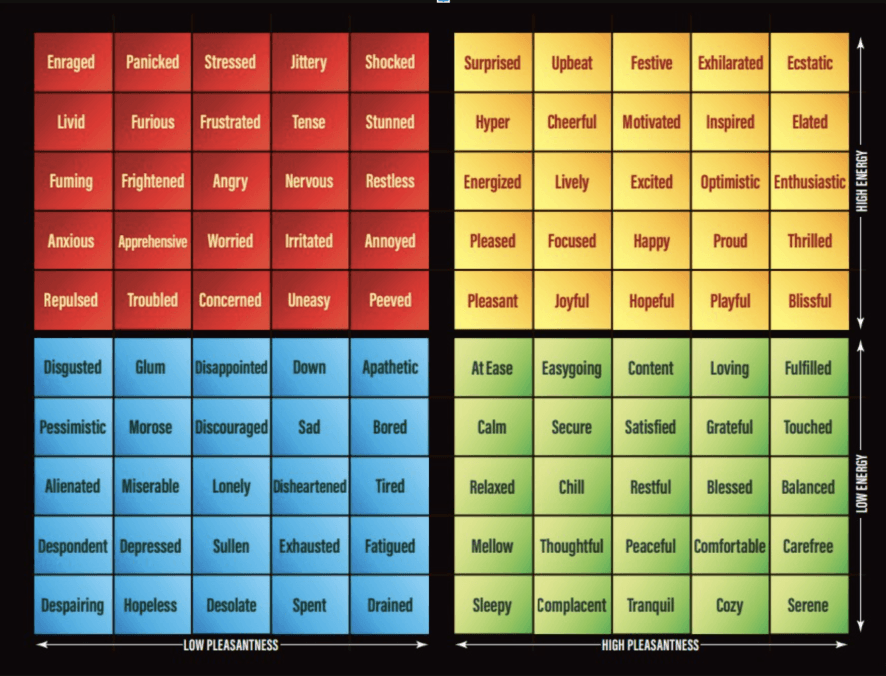5 Social emotional learning activities for elementary students
In this guide
Social and emotional learning (SEL) helps young people develop the skills they’ll need to live healthy and fulfilling lives. SEL is more relevant than ever in the aftermath of COVID-19 as students recover from the loss, trauma, and disruption of the pandemic.
The Collaborative for Academic, Social, and Emotional Learning (CASEL) breaks SEL down into 5 broad aspects:
- Self-awareness
- Self-management
- Social awareness
- Relationship skills
- Responsible decision-making.
A 2008 Meta-Analysis of SEL Programs showed an improvement in social and emotional skills, classroom behavior, achievement test scores, and attitudes about themselves and others. Additionally, there was a decrease in class conduct issues and mental health issues such as depression and anxiety.
How can it be used with elementary students?
Elementary school is a time when children develop the social and emotional competencies that will shape the rest of their lives. They’ll consider who they are, who they want to be, and where they belong in the wider world.
In later elementary years, children build upon these competencies to begin forming a clearer sense of who they are, defining goals and plans, and navigating challenges more independently…. They are developing their problem-solving strategies, learning how their actions can impact others, and beginning to understand how they can take actions to address bigger issues in their schools or communities.
Justina Schlund, National Centre of Safe Supportive Learning Environments (NCSSLE).
Moreover, other SEL skills such as the ability to empathize with others and see different perspectives is something that takes a long time to develop, which means starting them in elementary school is essential.
Here are class activities for each SEL aspect.
1) Self-awareness: mood tracking
CASEL summarizes self-awareness as “the abilities to understand one’s own emotions, thoughts, and values and how they influence behavior across contexts.”
Cultivating self-awareness helps students build confidence, identify their own emotions, and develop a sense of purpose.
Display a mood meter graphic, such as Marc Brackett’s below, to the class and model how to identify yourself on the graph. Explain how a color represents your current emotional state and why you feel this way. Then, ask students to do the same.

Have students to note the following in their journals:
Where are you on the Mood Meter?
- How would you describe the emotion you’re feeling right now?
- Why do you feel this way?
- What do you need when you feel this way?
Students can share their feelings out loud if time permits, but the goal is for them to recognize, articulate, and gauge their emotions over time. They could complete this activity every day or once a week, at the beginning or end of class, or on whatever schedule you think suits your students best. When reviewing their meter, ask students if they notice any patterns.
Find more self awareness activities and resources here.
2) Self-management: weekly goals
CASEL summarizes self-management as “the abilities to manage one’s emotions, thoughts, and behaviors effectively in different situations and to achieve goals and aspirations.”
Self-management helps students manage stress, stay motivated, and experience gratification when they accomplish their goals.
Students can explore their academic goals and the steps needed to achieve them. Remember, ‘academic goals’ don’t have to be as simple as getting an A!
You can help students generate ideas by asking the class to make a list of possible goals such as:
- Read 10 pages of your favorite book/graphic novel/comic etc.
- Reach out to a friend or classmate you’d like to catch up with.
- Attend one tutoring lesson in a subject you’re struggling in.
Students will record one goal in their journal and outline three steps they can take to meet their goal by the end of the week. Have students revisit their goals at the end of the week in their journals or as a class discussion.
- If they completed their goal: What worked and why?
- If they didn’t complete their goal: What did I learn? How can I make my next goal more achievable?
Find more self management activities and resources here.
3) Social awareness: broadening perspectives through art
CASEL summarizes social awareness as “the abilities to understand the perspectives of and empathize with others, including those from diverse backgrounds, cultures, and contexts.”
Social awareness helps students understand cultural and historical norms in different situations, contexts, and behaviors so they can cultivate empathy, critical thinking, and compassion.
Next time students examine a challenging subject, help them consider others’ perspectives.
Examining art–from architectural movements, literary periods, propaganda posters to film–is a great way to examine different subjects. I’ve found this to be a great exercise for subjects that aren’t inherently art related but require critical thinking and cultural awareness, such as literary genres, historical events, and intercultural studies.
One of my favorite lesson plans came from Project Zero’s Thinking Routines, which I modified for SEL-informed learning.
Values, Identities, and Actions:
Give students time to examine a work of art, video, or short story on their own. On a worksheet or in their notebooks, ask students to examine the following:
- Values can vary from person to person, but many are things such as justice, tradition, respect, honesty etc. What values does this work want us to think about?
- Are these your values? Whose values are they?
- Does the work condemn or encourage certain values?
- Why do you think it does that?
- Consider identities in the work. Who is it speaking about? Who is it speaking to? Are they the same people?
- Was anyone left out of this story/scene?
- Would you fit into this story/scene?
- {For social studies/history} What would it be like for you in this time period/event? What would it be like for your friends?
- What actions does this work encourage? Who should do these actions? Why?
- What would these actions cause?
- Do you agree or disagree with these actions?
- How would the audience carry out these actions?
The complexity of these questions will vary between early and late elementary. Younger students may need specific and shorter prompts.
A broader class discussion can occur at the end of the lesson or in small groups. Examining creative work from certain time periods and lenses can bring up a lot of feelings, so ensure students have appropriate context and are prepared for a respectful discussion.
Find more social awareness resources and activities here.

4) Relationship skills: feeling charades
How can we recognize the emotions of the people around us if they don’t tell us what they’re feeling?
CASEL summarizes relationship skills as “the abilities to establish and maintain healthy and supportive relationships and to effectively navigate settings with diverse individuals and groups.”
Charades can help students learn how to recognize emotions in others and foster empathy, all while expanding their own emotional vocabulary. This is a great exercise for early elementary students, and there are plenty of variations you can tailor to your class such as:
- Utilize an emotions wheel that students can refer to for vocabulary or create one as a class before the activity.
- Incorporate vocabulary from other activities, such Mood Tracking.
- Ask students to write down a feeling or emotion on an index card. Place the cards in a bowl. Students will take turns pulling one card out and acting out the emotion. Once the emotion is guessed correctly, the turn ends.
- Use a timer to give students enough time to act out their emotion before guesses begin.
- Students could draw facial expressions of specific emotions on paper instead of acting them out.
For older elementary students:
- Incorporate scenarios for older students by asking “How would you feel if…?”.
- You can ask students to come up with some scenarios before the activity. This could allow them to explore real conflicts they may face in their daily lives.
- Role-play could be utilized in which two students or small groups consider opposing sides.
5) Responsible decision-making: models and games
CASEL summarizes decision-making as “the abilities to make caring and constructive choices about personal behavior and social interactions across diverse situations.” Students learn how to consider ethics, safety, and repercussions through the decision-making they face in everyday life.
Introduce students to the steps involved in the decision-making process with this formula:
- Take a moment to think about the problem you’re facing. How would you define your problem?
- Gather all the relevant information that you’ll need to make your decision. Are there any alternatives you haven’t thought of?
- Consider your options. Try writing down the positives and negatives for each solution or alternative you come up with.
- Think about the consequences of each option.
- Choose the option you believe is the best.
- Try it out and monitor your progress.
- Did your solution work? Why or why not? Review your experience and consider what you did right, what you did wrong, and what you could do the next time you face a similar problem.
This formula can be shared with the class or completed through a worksheet. The best way to implement the formula is through experience. Students can use this formula in activities such as:
- Classroom debates. For ideas, check out 29 Interesting debate topics for kids of all ages.
- Scenarios: Pose role-play scenarios to the class or have students brainstorm possible conflicts they might face in everyday life. A great way to do this is:
- Introduce the scenario’s context and its relevance to their everyday lives.
- Ask students to consider different options, using the decision-making formula as a reference.
- Reflect on the decision-making process in group discussions and/or individual reflection.
- Offer your guidance and support throughout the entire process and provide constructive feedback at the end.
- Classroom Games. Sometimes challenges happen quickly, and students can practice on-the-spot decision-making in safe environment through familiar games such as:
- Musical chairs
- Tik-tac-toe
- Pick-up sticks.
- Video Games. If your students respond well to gamified education, consider games like:
- Quandary: ethical decision-making.
- Hall of Heroes: cooperation and friendship.
Find more decision making activities and resources here.
Sources and further reading
- Time. (n.d.). Up to 5 Million Kids Have Become COVID Orphans. [online] Available at: https://time.com/6111902/covid-orphans-coping/.
- Yoder, N., Dusenbury, L., Martinez-Black, T. and Weissberg, R. (2020). Emerging Insights From Insights to Action Redefining State Efforts to Support Social and Emotional Learning 2 | CSI Emerging Insights Brief Acknowledgments. [online] Available at: https://casel.s3.us-east-2.amazonaws.com/CASEL-PR-Insights-to-Action-State-Efforts.pdf.
- www.facinghistory.org. (n.d.). Teaching Resources | Facing History and Ourselves. [online] Available at: https://www.facinghistory.org/how-it-works/teaching-resources.
- www.rti.org. (2023). Guidebook on Promoting Social and Emotional Learning | RTI. [online] Available at: https://www.rti.org/insights/social-emotional-guidebook-use [Accessed 25 Feb. 2024].
- Reilly, K. (2022). How ‘Social and Emotional Learning’ Became the Newest Battleground in the Classroom Wars. [online] Time. Available at: https://time.com/6170755/social-emotional-learning-schools-conservative-backlash/.
- safesupportivelearning.ed.gov. (n.d.). What is one way that SEL is showing up in elementary school(s) in your context? | National Center on Safe Supportive Learning Environments (NCSSLE). [online] Available at: https://safesupportivelearning.ed.gov/voices-field/what-one-way-sel-showing-elementary-schools-your-context.
- Harvard Graduate School of Education (2022). PZ’s Thinking Routines Toolbox | Project Zero. [online] pz.harvard.edu. Available at: https://pz.harvard.edu/thinking-routines.
- Positive Action (2020). The 5 Social Emotional Learning (SEL) Core Competencies. [online] www.positiveaction.net. Available at: https://www.positiveaction.net/blog/sel-competencies.
- Positive Choices. (n.d.). Decision-making and Problem-solving: Class Activity. [online] Available at: https://positivechoices.org.au/teachers/decisionmaking-and-problemsolving-class-activity.

Amanda Joachim
briefcase iconEducation & Research Consultant
Amanda Joachim is an educational media consultant, researcher, and writer. Her interdisciplinary and creative approach is inspired by her own experiences learning and working in the Philadelphia school district.
Other posts
Want more content like this?
Subscribe for blog updates, monthly video releases, trending topics, and exclusive content delivered straight to your inbox.











